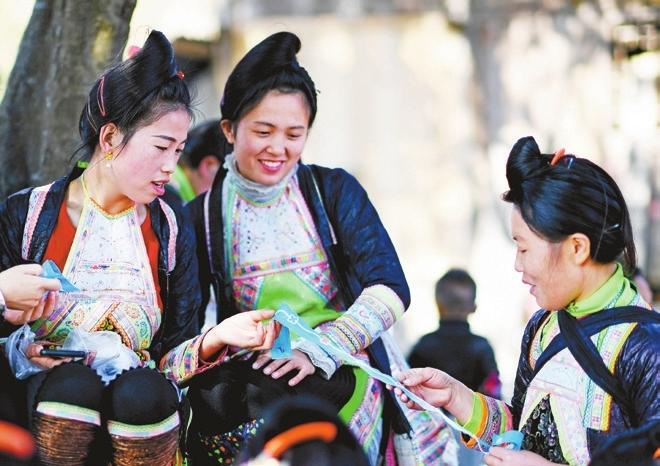
IN front of the village gate, Gun Shuixin and more than 10 other men stood on both sides of the road, holding up muskets and pulling the triggers aiming toward the sky. With the crisp gunshot, plumes of white smoke emitted from the muzzle. Curious tourists standing nearby pulled out their phones and cameras to capture the memorable moment. Gun, 73, hails from Biasha Village in Congjiang County, located in Southwest China’s Guizhou province. In a country where possessing guns is illegal for civilians, the scene of gunfire in the landlocked remote village has drawn tourists, with villagers reaping benefits from the tourism industry. In the Miao ethnic language, Biasha means a place with lush trees and grass. The village is home to more than 2,800 people. Known as the “last gunner tribe” in China, Biasha villagers have used guns to hunt and protect themselves for centuries. Gun acquired his muskets at the age of 15 following the coming-of-age ceremony. “Now, we only use gunpowder, instead of bullets,” says Gun, adding that every musket in the village has been registered with the police. China banned the possession of firearms decades ago, but villagers in Biasha are exempted from the ban, although they are no longer allowed to hunt. For over 50 years, guns, as the spiritual totem of the villagers, have fascinated tourists coming to explore the local culture. Apart from the gunfire performance, tourists are awed by the stilted buildings along the hillside, wooden racks for sunning rice and the hairstyle of the locals, where only the hair in the center of the head is tied up in a bun, while the remaining part is shaved. At a public square in the village, some 100 visitors were waiting for the opening of a folklore performance. Li Kaikai, who works in Shenzhen, decided to visit the village after she viewed a short video about the village. “It only took me half an hour to research the details about my travel plan and buy a train ticket to this place,” she says. Folk performances such as the Miao traditional dance and haircut with a sickle, a custom for the village, are staged for visitors, providing an additional source of income to the villagers serving as amateur performers. Shi Dajiang, a staffer from the tourism management team, says some 200 villagers have joined two performance teams, earning nearly 100 yuan (US$14) per day during the peak season of tourism. “We aim to create more interactive and immersive experiences for our visitors, not just to enhance their understanding of our culture but also to allow more villagers to benefit from tourism,” Shi says. The village shook off poverty in 2016, and in 2023, the per capita disposable income reached 11,400 yuan, 68% higher than that of 2019. (China Daily) | 
